Making accommodation affordable and accessible to those in need has been a constant priority in the UK for decades.
The delivery of social housing in the UK has been dictated by government policies and legislation, and by events that have impacted society and our way of life.
This timeline takes you through the history of social housing, and how we grew from helping to rebuild after World War II to becoming a vital cog in the UK’s housing sector.

The idea of ‘rebuilding’ after the war was at the forefront of Britain’s thinking. Homes were needed fast but cheap. To aid this, the concept of prefabricated houses was born.
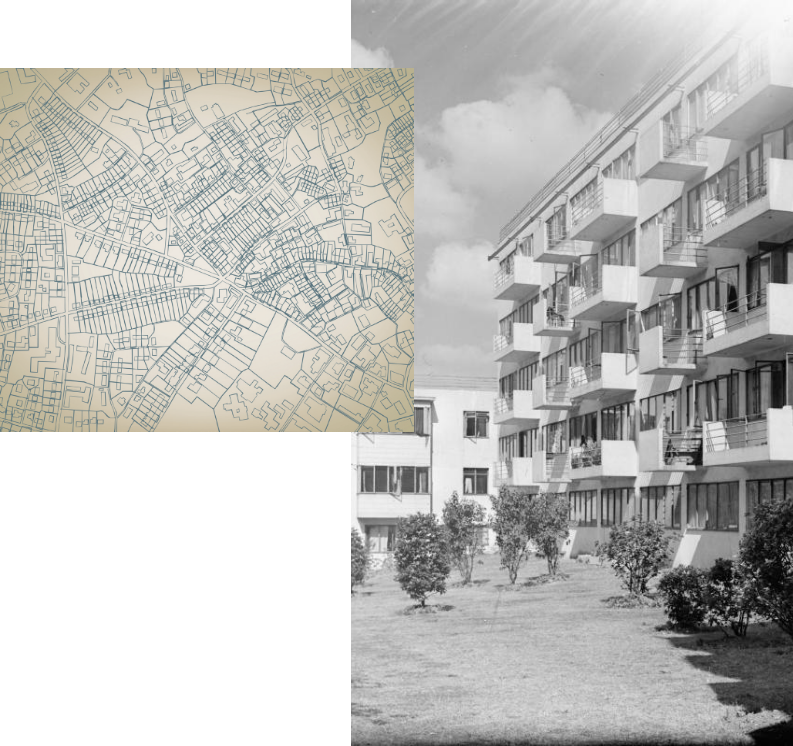
All of this growth required some kind of order. 1947 saw the introduction of town planning.
1945-51
POST-WAR AND THE NEED TO REBUILD
World War II created a significant need for new houses across the country but particularly in those areas affected by bombing raids, where overcrowding was now rife. This was particularly exacerbated by the almost non-existent housebuilding programme during the war years, and the ‘baby boom’ of the late 1940s. The need for good-quality housing to move people out of ‘squalor’ was widely recognised.
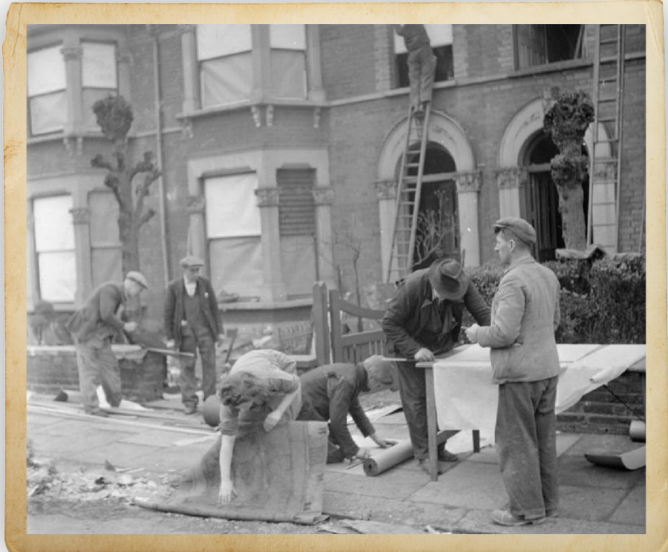
In 1944, building new towns moved up the agenda and the Abercrombie Plan was born. Settlements for around 60,000 people were proposed across the country, the first of these to become a reality being Stevenage.
DID YOU KNOW? 
In 1948, the National Health Service was established by the post-war Labour government, representing a fundamental change in the provision of medical services. The GP service became organised on the basis of a ‘capitation fee’ paid by the government on every patient registered with a doctor.
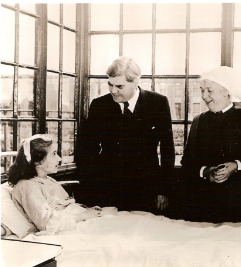
CLEARING THE SLUMS: WELFARE HOUSING FOR THE LOW-PAID
After returning to Government, and with new planning and housing measures in place, the Conservative Party set about looking to stimulate the building of new homes and replacing those that were no longer fit for purpose. It was a mammoth task, and one that could only be achieved through significant public investment in housing.
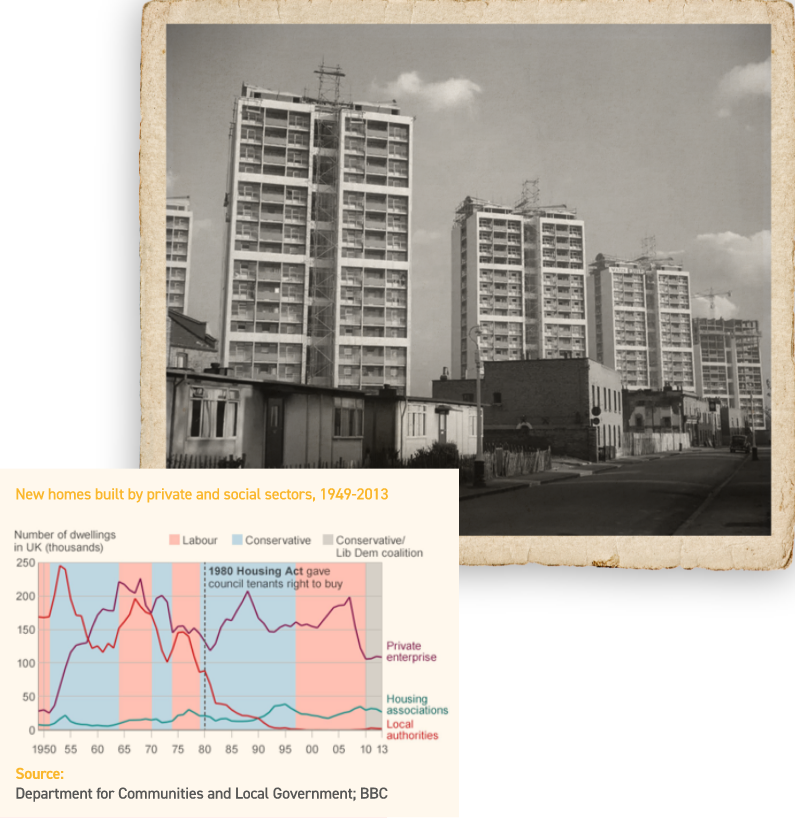
Investment in social housing hit its peak in the 1950s. Ambitious targets were set and the introduction of the ‘People’s House’ came to fruition.
DID YOU KNOW?
Britain switched on its first nuclear power station, Calder Hall, on 17th October 1956. It was the first in the world to supply substantial quantities of electricity to a national system and was opened by Elizabeth II. It ended up being operational for 47 years before closing in 2003.
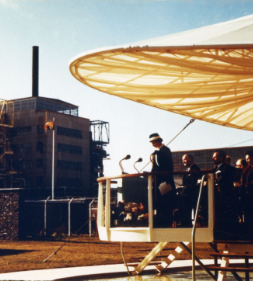
1951-60
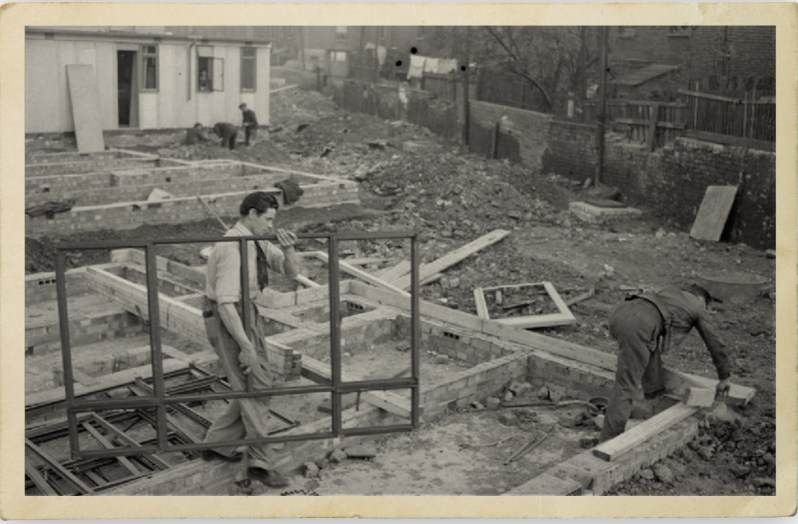
Following the First and Second World War, clearing the slums became a major focus. Authorities were given new power to purchase land with a view to maximise its use, with minimal involvement from housing associations.

Upon a return to power, the Conservative Government sought to increase home ownership across the nation. The notion of ‘Green Belts’ were also introduced to act as a buffer for all of these new homes – a controversial aspect of planning still in place today.
MOVE TOWARDS HIGH-RISE DEVELOPMENT
The 1964 Housing Act established the Housing Corporation, the public body to fund and regulate housing associations in England. 1965 saw the introduction of the first set of national building standards, the Building Regulations 1965, replacing the by-laws for construction that existed until then.

After peaking in the 1950s, council housing had begun its decline as private developers stepped up to the plate to provide new housing, often for home ownership. Meanwhile, a lack of available land in towns and cities meant that a new approach to maximising land was needed.
DID YOU KNOW?
The 60s were largely seen as the golden age of pop music. The Beatles led the ‘British Invasion’ with their unsurpassable popularity around the globe, while acts such as The Who and The Kinks spoke to a slightly edgier audience.

1960-70
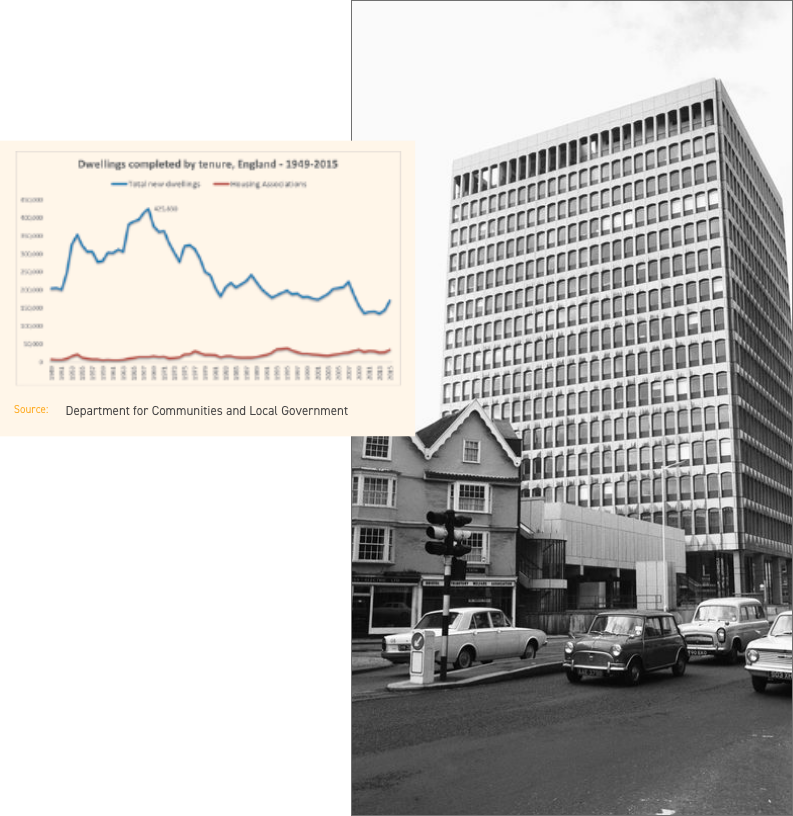
High-rise developments were seen as an effective way of solving the post-war housing crisis: more homes could be built on less land and it took full advantage of smaller, inner city sites. By 1968, the total number of new homes built was 425,830 – the highest level achieved in the UK.

In 1966, BBC TV play Cathy Come Home became very popular when it highlighted the homelessness and poor housing issues of 1960s. The hard-hitting drama contributed towards the formation of the homeless charity Crisis in 1967. The charity Shelter was also launched in 1966.
“THE ONLY LIMIT OF POWER ARE THE BOUNDS OF BELIEF.”
HAROLD WILSON
BRITISH PRIME MINISTER 1964 – 70
1970-79
First housing bubble, urban decay, and the desire for home ownership
The Conservative Government of the early 1970s placed much emphasis on economic growth, which saw the first rapid increase of house prices. With housing getting more expensive, and councils no longer building homes in great numbers, when Labour came to power in 1974 they needed someone else to provide housing for low-earners. Could housing associations be the answer?
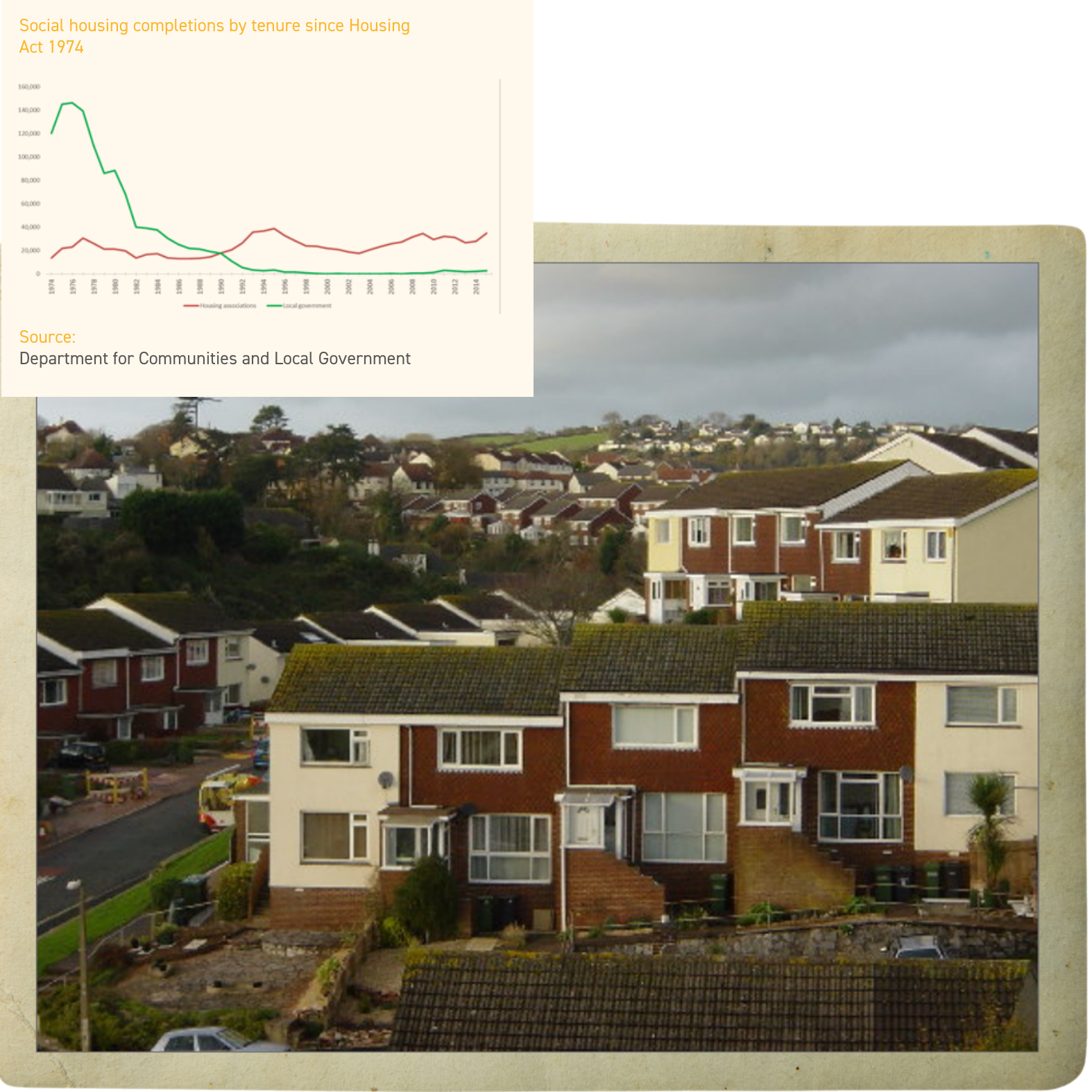
The 1974 Housing Act saw large-scale funding by Government of the housing association sector.
This Act marked the beginning of a significant increase in development of housing associations, almost double that of the previous 25 years.
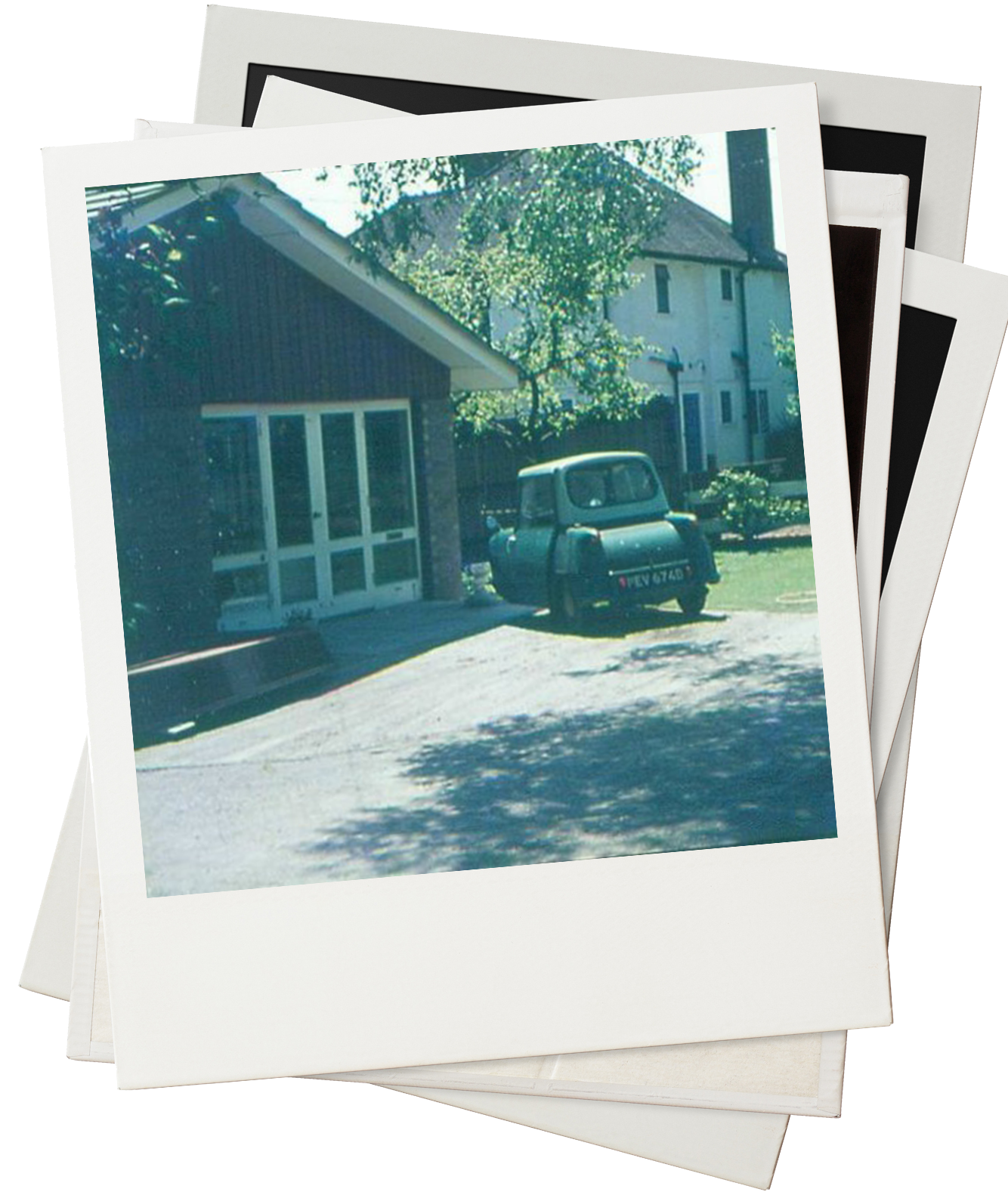
Home ownership was continuing to grow throughout the 70s, leading to the creation of the UK’s first ‘housing bubble’.

DID YOU KNOW? 
1977 marked the 25th year of Queen Elizabeth II’s reign, and celebrations took place throughout the year for her Silver Jubilee. In addition to numerous street parties and celebrations in Britain, the Queen opened the Jubilee Walkway and the Southbank Jubilee Gardens.
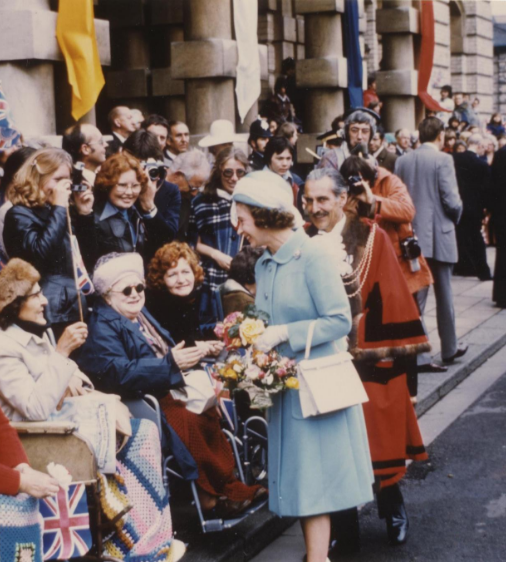
Margaret Thatcher, the Right to Buy, and stock transfer
When the Conservatives returned to power in 1979 under Margaret Thatcher, they did so by encouraging home ownership as a priority. This extended to lower earners in council housing, and much to the chagrin of local authorities and to great opposition from Labour, they saw giving council housing tenants the right to buy their homes as an answer.
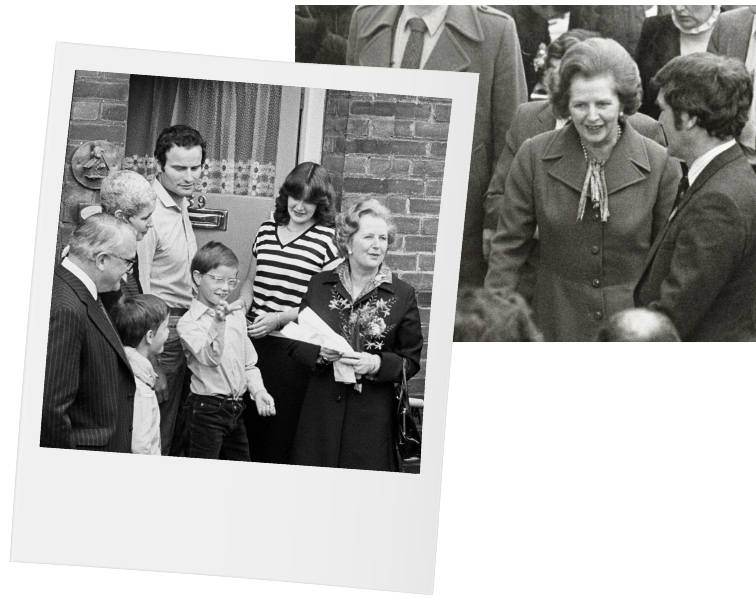
The Right to Buy scheme was introduced after Margaret Thatcher became Prime Minister. It was a scheme initially proposed by the Labour Party in its manifesto for the 1959 General Election.

Large-scale stock transfer diminished the accounts of the councils, hampering their ability to carry out repairs and improvements. As a result of this, many people were now faced with structural problems with some of the concrete houses, which made them unmortgageable and hard to resell.
1979-87
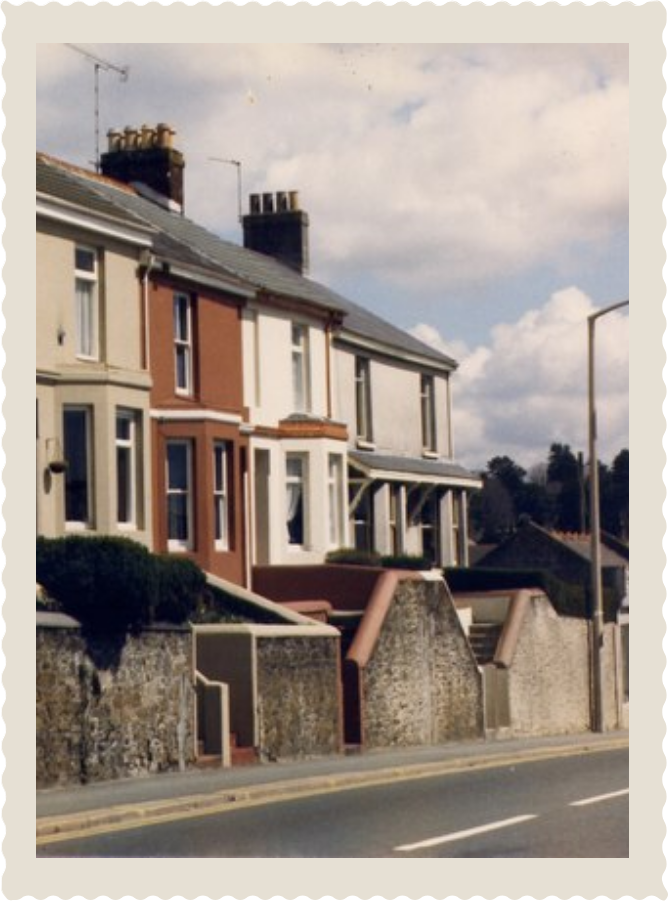
By 1982, sales hit an all-time peak of over 240,000, and in 1984 the available discounts were increased. Between 1979 and 1995, 2.1 million properties were transferred from the public sector under Right to Buy.
DID YOU KNOW? 
1986 saw the birth of the now infamous Live Aid concert. Founded by musicians Bob Geldof and Midge Ure, the concert aimed to raise funds to support the famine relief in Ethiopia, and was held simultaneously at JFK Stadium in Philadelphia and Wembley Stadium in London. The concert raised over $127 million for famine relief.

“A MAN’S RIGHT TO WORK AS HE WILL, TO SPEND WHAT HE EARNS, TO OWN PROPERTY, TO HAVE THE STATE AS SERVANT AND NOT AS MASTER, THESE ARE THE BRITISH INHERITANCE.”
MARGARET THATCHER
BRITISH PRIME MINISTER 1979 – 90
1987-97
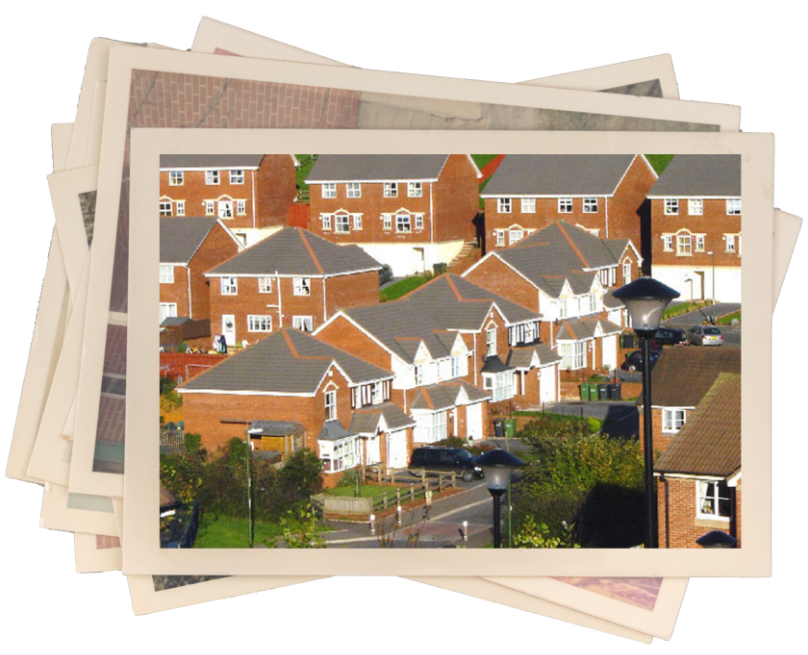
The Right to Buy ushered in the second housing bubble, with house prices rising dramatically in the late 80s.

DID YOU KNOW? 
In 1989, while working at CERN, the European Particle Physics Laboratory in Switzerland, Tim Berners-Lee came up with the idea of the World Wide Web, a new way of using existing internet technology to share information. He wrote the first web browser the following year.

Second housing bubble, collapse of council housing, and reform of housing associations
With the Right to Buy scheme still going strong and reducing the number of council homes available, and a Government with the view that councils were not meeting the needs of their tenants, someone else had to step in to build new, and maintain old, social housing. Once again, housing associations were seen as the potential solution.
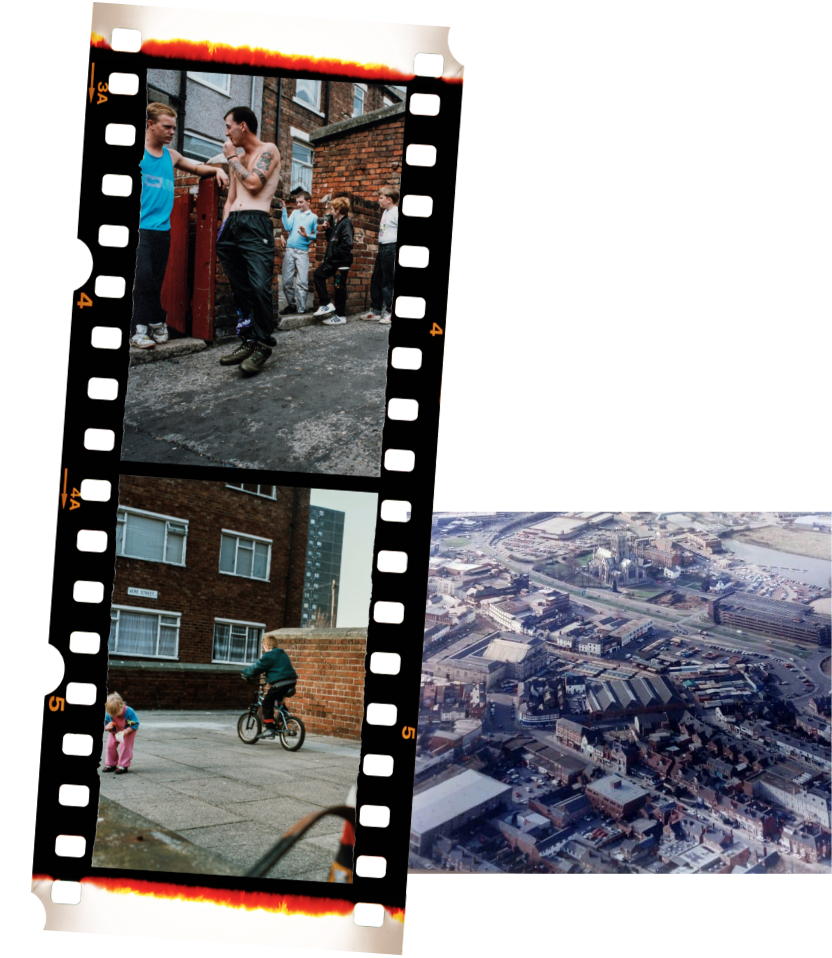
In 1987, the Government set out to address issues within the housing system and introduced the Housing Act 1988. Not only did this give council tenants the right to transfer to other landlords, it also spelled out how councils could seek to dispose of their housing stocks.
Housing associations were now having to operate under far greater risk than before. With the introduction of the policy of Housing Action Trusts, the strategy shifted to target run-down estates and give them the choice of who would be able to run them.
“We know the problems…. and we know the solution; sustainable development.”
Tony Blair
BRITISH PRIME MINISTER 1997 – 2007
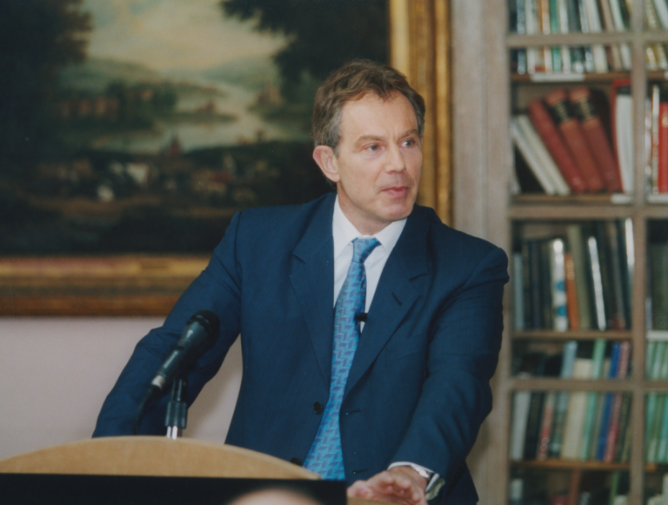
An early pledge of Tony Blair’s was to stick to the spending plans of the Conservative Government. With the introduction of the ‘New Labour’ manifesto, spending on social housing slumped in the years to follow.
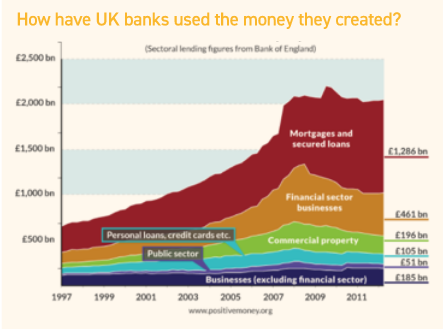
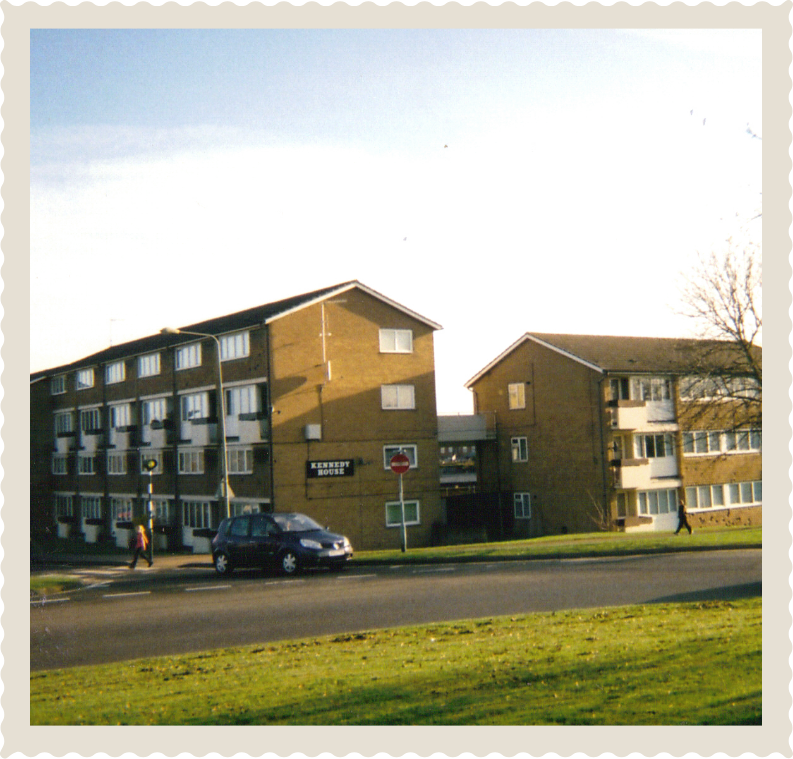
Right to Buy shifted when powers for the scheme were given to Scotland and Wales. Discounts were reduced and restrictions brought in, all addressed in the Housing Act 2004. This, along with rising standards in social housing, ushered in a huge shift in the market.
1997-2007
New Labour: The third housing bubble
Labour returned to power for the first time in 19 years in 1997 with a landslide majority. Labour wanted to be seen as a party that provided a socially progressive ideology with economic responsibility. With access to finance becoming more and more easy, home ownership came into the reach of many who could not before.
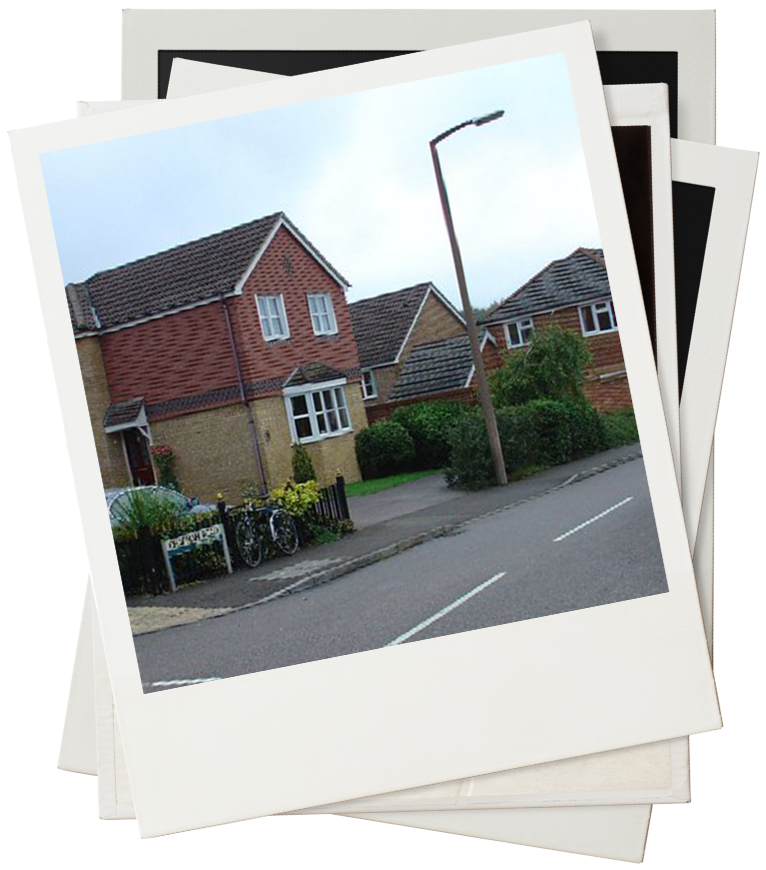
New Labour saw strong economic growth, but that growth also meant rising house prices. Britain saw its third housing bubble until 2007 when the financial crash brought an end to the boom.
DID YOU KNOW? 
On 29th June 2007, Apple launched the iPhone at the Macworld convention in San Francisco. The iPhone helped turned Apple, which Steve Jobs co-founded with his friend Stephen Wozniak in California in 1976, into one of the world’s most valuable corporations.

2007-10
The economic crash
The period 2007 to 2010 saw one of the most significant global financial crashes since the Second World War, and the UK was not outside of its reach. The crisis caused banks to limit their new lending to businesses and households, which caused prices in these markets to drop. The house price bubble burst.


The financial crisis had a massive impact on new houses being built; numbers plummeted and the market slumped. This had a huge impact on public housing.
DID YOU KNOW?
Prince William married Kate Middleton in a lavish wedding at the beginning of 2010, a ceremony watched by millions around the world. The couple emerged from Westminster Abbey as newlyweds before taking a horse-drawn carriage to Buckingham Palace, where they greeted royal fans who were waiting along the route.
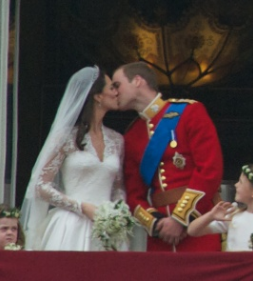

After Blair’s departure, new targets were set by Gordon Brown in the Green Paper. Taxpayer funds were used to kickstart stalled projects and social landlords were aided through the credit crunch.
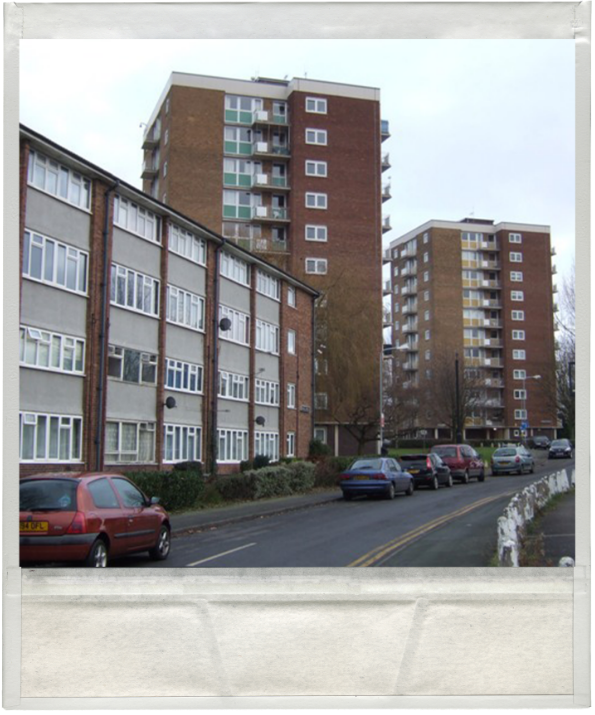
2010-15

During their time in power, the Coalition encouraged the growth of the private rented sector, in the hopes this would raise standards of housing and landlords.
Right to Buy was extended and would be trialled by five housing associations across the country.
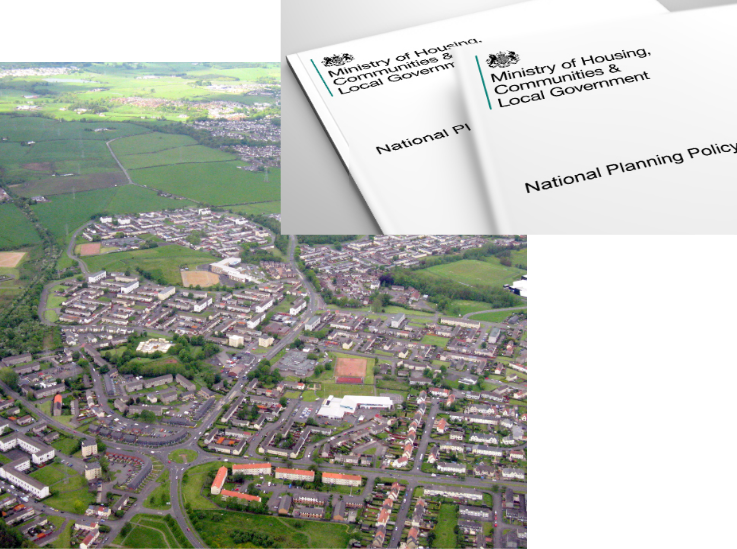
Plans to consolidate statements and documents saw the creation of the National Planning Policy Framework, amounting to a drastic shift in how planning is carried out.
Housing crisis, welfare reform and the shift from grant funding
A hung parliament at the 2010 General Election, where no party achieved an overall majority, led to the first Coalition Government since the Second World War. The new Conservative-Liberal Democrat Government set about ‘balancing the books’ through significant public spending cuts and reform.
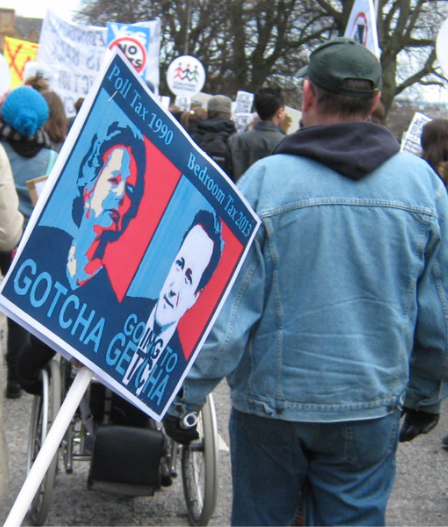
Capital spend on affordable housing rose in 2014/15 under a Coalition Government with the ‘Affordable Housing Programme’. The decade also saw welfare reforms, benefit caps and the controversial ‘bedroom tax’.

Did you know? 
London hosted the hugely successful 2012 Summer Olympics and Paralympics – the Games were previously hosted in London in 1908 and 1948. The London 2012 was the most gender equal in Olympic history. It was the first time ever that women competed in all 26 sports (but not all disciplines).

“The economy is the start and end of everything.”
David Cameron
BRITISH PRIME MINISTER 2010 – 16
2015-19

In 2016, Britain votes to leave the European Union, sparking years of negotiations and political challenges.
The Government sought to tackle the challenge of homelessness and rough sleeping, and eliminate it by 2027, by requiring councils to start assessing the risk of homelessness earlier and set out a roadmap for ending it as soon as possible.

Did you know? 
In 2015, the world set out to strike a deal on the issue of climate change. After two weeks of intense deliberation, 195 counties produced the Paris Agreement which came into effect in 2016. The thirty-one page document was intended to deal with greenhouse gas emission mitigation.

Brexit, the Grenfell Tragedy, and a new regulator
The Conservative Party secured an unexpected majority in 2015 under David Cameron, but his honeymoon was short-lived as the long-promised referendum on the UK’s membership of the European Union saw the public vote to leave. Meanwhile, a fire at a west London tower block set in motion significant reforms to both building safety and social housing regulation.
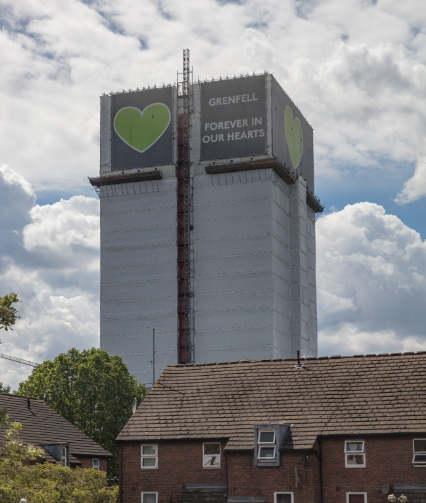
The terrible tragedy at Grenfell Tower generated calls for greater scrutiny around health and safety issues, in particular fire regulations, building materials and construction standards for all buildings.
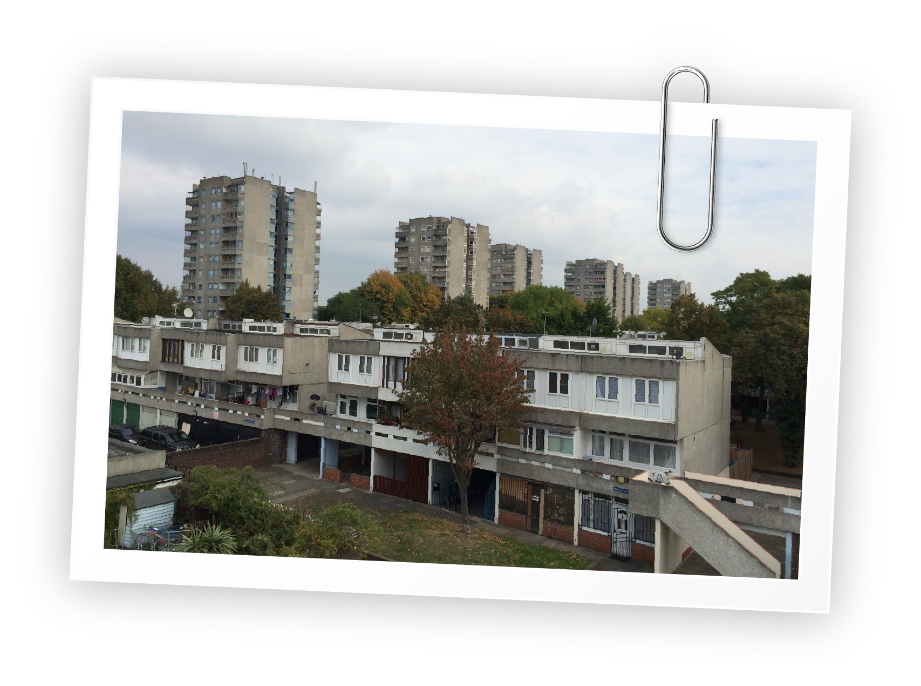
Changes to how social housing was regulated kicked off in 2017, marking the beginning of several years of new regulation and requirements for housing providers.

After years of negotiations and the collapse of Theresa May’s government, the UK agrees an exit deal with the European Union and leaves the EU in January 2020.

The Covid-19 pandemic shook the world, with the UK going into a full lockdown on 23 March 2020. This quickly changed the way that we lived and worked, as well as how businesses operate.

In a bid to improve access to home ownership, the Government confirms that it will move ahead with extending the Right to Buy scheme to housing association tenants.
2019-Today
Covid-19, building safety, and putting customers first
After winning a strong majority to deliver his Brexit deal, Boris Johnson set out to deliver his promise to level-up the UK economy. However, the Covid-19 pandemic and a series of national lockdowns led to a fundamental shift in how we live and work.
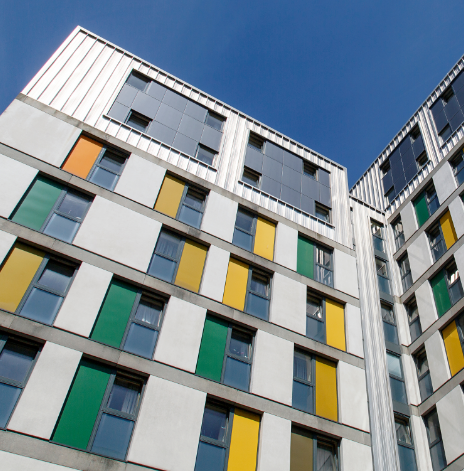
The Building Safety Act brings in stricter rules for new developments to try and avoid another tragedy like Grenfell.

In response to the Grenfell Tower tragedy, the Government seeks to improve standards for social housing tenants through the Social Housing Regulation Bill – including ‘naming and shaming’ poor-performing landlords.
Did you know?
A comment on the social climate of modern-day South Korea, ‘Parasite’ made waves throughout the world of cinema and went on to become the first non-English film to win Best Picture at the Oscars. Director Bong Joon-ho also won Best Director as well as picking up a further two awards, making Oscar history.

With around two million homes destroyed and many more damaged in Britain during World War II, two-thirds of which were in London, millions were made homeless. The change in government in 1945 did not stop many of the wartime concepts from being introduced by the new Labour administration. This included introducing legislation that removed explicit references to housing for the ‘working-class’ and introduced the concept of ‘general needs’ – that council housing should be available for a variety of needs and members of society.
Prefabricated homes
Following the war, homes were needed quickly and cheaply, and the idea of ‘rebuilding’ was both a symbolic and physical aspiration.
Envisaged under the Housing (Temporary Accommodation) Act 1944, after a review of public housing in 1942, prefabricated homes (or ‘Prefabs’, as they became colloquially known) became the symbol of post-war rebuilding. To keep costs and build times down, they were created using new construction techniques including pre-cast reinforced concrete (PRC).
It was originally intended that there would be 500,000 Prefabs, designed to have a 20-year lifespan. However, only 150,000 were built as part of the Government’s post-war building programme out of a total of 1,500,000 new homes between 1945 and 1951.
Despite being a temporary solution, many of these homes still existed well into the 21st century.
The New Towns Act 1946
In 1944, the Abercrombie Plan for London was published, proposing eight new towns to be built within 50 miles around London. These towns would be designed to accommodate up to 500,000 inner-Londoners to combat overpopulation in urban areas, with similar scenarios proposed for Manchester, Birmingham and elsewhere.
The Atlee Government, having unexpectedly won the 1945 General Election, established the New Towns Commission to build on the Abercrombie Plan. The Commission concluded that Development Corporations, backed by the Government, would be needed to bring forward these new towns.
The Commission also recommended that these settlements should be built for up to 60,000 people, organised into neighbourhoods (with associated shops, amenities, and infrastructure) and, controversially, should be primarily built on greenfield sites.
The first of these new towns was Stevenage, approved in 1946, with 14 others planned throughout the 1940s including Crawley, Hemel Hempstead, Harlow, and Basildon.
The birth of town planning
Before World War II there was very little top-down control over the planning of settlements. In the 1930s, expansion of suburban areas was largely uncontrolled, and undersigned, meaning that it soon got out of hand. The Town and Country Planning Act 1947 was passed through Parliament to counter concerns about this ‘sprawl’, requiring new developments to receive planning permission before they could go ahead, with development plans being required for each county. Many of the measures introduced in the Act still apply today, or form the basis upon which newer measures were built upon.
Council housing at its peak
The 1950s saw the Government’s investment in council housing hit peak levels as it sought to address poor quality housing and housing shortages. In 1951, only half of English households had their own fixed bath, toilet, running hot water and a stove. Therefore, it was felt that more needed to be done to help get poorer families into good quality housing. Under Harold Macmillan, then Housing Minister, the Conservatives set themselves an ambitious target of 300,000 new homes a year, the bulk of which would be two-bedroom terraces. Known colloquially as the ‘People’s House’, these properties were smaller in size and standard to those previously constructed in the post-war housing programme.
The following graph demonstrates the marked decline in council house building throughout the later 20th century from private, social, and local authority builders.
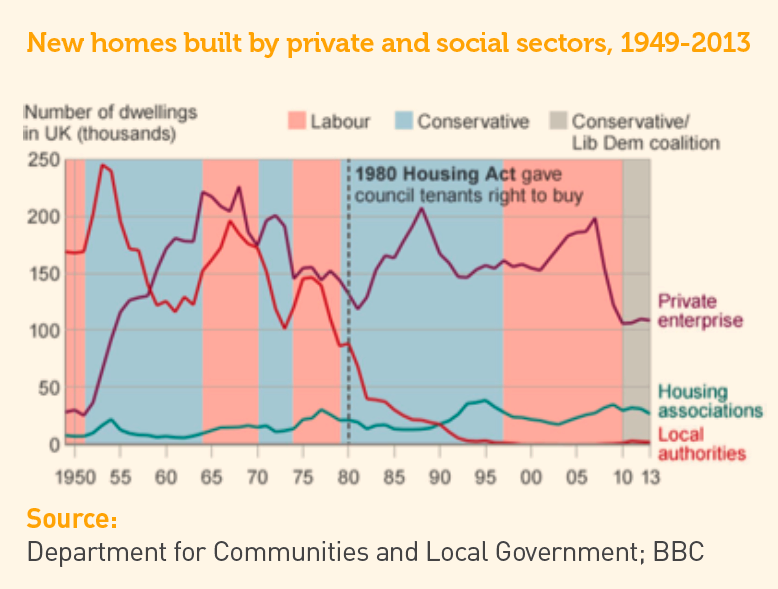
Clearing the slums
Clearing the slums was a major policy aim of the inter-war period between the First and Second World Wars, and was once again a priority during the 1950s. The aspiration to do this had been demonstrated in 1930 with the passing of the Housing Act, which included slum clearance measures, but these were largely unused once war became more likely and then dominated the political agenda. To do this, local authorities were given powers of compulsory purchase to purchase urban land and housing for development. This included poor quality, cramped and overpopulated homes that had become unfortunately common – partly due to the pressures of the war and the loss of homes due to bombing raids.
Maximising this land was crucial, and so funding for local authority housing was prioritised for higher densities, with the most homes possible placed on as little land as possible. In 1951, the UK’s first multi-storey residential apartment tower block was completed at The Lawn in Harlow, Essex. This showcased the potential for high-rise development to solve the housing crisis.
Housing association activity in this was minimal, with the vast majority of social housing being provided by councils and in new towns. This resulted in a large-scale up-rooting of families across the country, many of whom who were later re-housed in these new ‘communities’. More than 900,000 would be moved from slums during the 1950s and 1960s.
Rise in home ownership
Encouraging home ownership has long been a policy priority for the Conservative Party, in order to help people achieve their aspiration of owning their own home. This took off in earnest in the 1950s, when the Conservatives returned to power. In 1951, only 29% of households owned their homes but by 1964, when they left office, this had increased to 45%. Helping people to achieve home ownership would continue to be a staple Conservative policy long into the later 20th century and in the 21st too.
The Green Belt
While the notion of the ‘Green Belt’ – a land use designation for areas of largely undeveloped or agricultural land that acts as a buffer between major settlements – had first been proposed in 1935, it wasn’t until 1955 that the Government began encouraging local authorities to consider protecting land around their settlements and officially designating them as Green Belts. Green Belt protections are still in place today, with the Government prioritising brownfield development before the Green Belt is built on. Approximately 13% of land in England is currently designated Green Belt, some 1,600,000 hectares.
The Green Belt has since become a controversial aspect of the planning system, with some suggesting that it is vital to protect the natural environment from urban sprawl and others saying it is a barrier to building the new homes we need.
Second Housing Bubble
The Right to Buy policy saw the value of homeowners’ assets surge in what became known as the second housing bubble – the Lawson Boom. House prices rose by 16% in 1987 and a further 25% in 1988, creating a positive wealth effect. This is turn led to an increase in consumer spending.
The Lawson Boom was a classic example of a ‘boom and bust’ economic cycle. The late 1980s were a period of rapid economic expansion. This ‘boom’ period followed on from the recession of 1981 where unemployment had peaked at three million.
Collapse of council housing
In its 1987 White Paper ‘Housing: the Government’s Proposals’, the Government set out the main objectives of its future housing policy in England and Wales, which included giving council tenants the right to transfer to other landlords if they chose to. The legislation that gave impetus to this reform was contained in the Housing Act 1988. The Government’s rationale behind this policy was the perception that the public sector was not paying enough attention to the wishes of tenants. It felt that by offering tenants a variety of forms of ownership and management, their requirements would be better met.
The Housing Act 1988 also spelled out ways in which councils could dispose of some or all of their housing stock to other landlords under powers in the Housing and Planning Act 1986. Many councils explored the possibility of transferring their stock to housing associations. This required a balloting system, whereby the majority of tenants in an authority would have to vote in favour of voluntary transfer to the housing association for it to take over.
Reform of Housing Associations
The Housing Act 1988 also introduced several reforms for Housing Associations. The Government sought to expand the housing association sector by drawing in private finance to create ‘mixed funding’ schemes. The attraction of this formula was that any given level of capital grant to housing associations could achieve more new building for letting than the same funding for local authorities, who were unable to lever in private loans. However, it also meant that housing associations were operating at greater financial risks.
The Government also introduced the policy of Housing Action Trusts. This was the Government’s key strategy to improve the most run-down council estates and, ultimately, give tenants of these estates a choice over whether the estates should be run by local authorities, housing associations or private companies.
New Labour’s spending limits
In the run-up to the 1997 General Election, the leader of the Labour Party, Tony Blair, pledged to stick to the Conservative Government’s spending plans. Having won with a landslide majority in 1997, Tony Blair could implement his ‘New Labour’ manifesto, one which he hoped would overcome the narrative that Labour could not be trusted with the economy. In 1997/98, just over £4 billion was spent by the Government on social housing – less than in any year during the Conservative’s 18-year administration beforehand. Indeed, the Labour Government only increased investment into social housing during its third term in office, in the 2005/06 and 2008/09 financial years.
Continuity of stock transfer
During the early years of the New Labour Government (1997-98), Labour continued with the ‘stock transfer’ programme where council homes were being sold off to housing associations. Between 1997 and 2010 almost one million council homes had been sold to housing associations, 80% of all stock transfer sales since the Conservatives launched the Right to Buy programme.
The third housing bubble
The New Labour years experienced strong economic growth over a sustained period. Workers were earning more and the unemployment rate declined, while the financial deregulation begun during the Thatcher years continued. As a result, it was particularly easy to access mortgages, coupled with the willingness to lend, that made housing seem more affordable. Because 31% of all money created between 2000 and 2007 went to residential property, house prices rose considerably faster than wages. This contributed to Britain’s third big housing bubble of the post-war period. The average house price more than doubled from £100,000 in 2000 to just under £225,000 in 2007, before the financial crash brought the boom to an end.

The impact on housing
A significant impact of the financial crisis was the decline in new house building. In particular, small and medium-sized (SME) developers, as well as prospective buyers, struggled to secure funding and many were subsumed by the major developers. In 1988, 40% of new homes in the UK were built by SME builders; today that stands at just 12%. In June 2008, the number of new houses being built in Britain plummeted by nearly 60% from a year previously to 6,890 as tighter mortgage lending conditions put off potential home buyers.
The recession also took its toll on the labour market. Due to the slump in the housing market, 5,000 building workers alone were laid off in the first few months of the crash. By July 2008 property sales had hit a 30-year low, another blow to the housebuilding market.
The development of public housing also suffered and the impact was two-fold. Many housing associations had diversified into building properties for sales and so were also caught up in the steeply rising credit costs and a collapse in land house prices. At the same time, public housing was also dependent on private sales to deliver units through Section 106 agreements – legal agreements between Local Authorities and developers, whereby the developer contributes to improvements in infrastructure in the local are or obliging to an affordable housing contribution.
Establishment of the Homes and Communities Agency
When Tony Blair stepped down as Prime Minister in 2007 and Gordon Brown took over, a new Green Paper ‘Homes for the future: more affordable, more sustainable’ set a fresh target to accelerate annual house building rates to 240,000 homes a year by 2016.
Under the Housing and Regeneration Act 2008, the Homes and Communities Agency (HCA) was established as one of the successor bodies to the Housing Corporation, taking over the Housing Corporation’s role as Social Housing Regulator and funder of new affordable housing in England.
As part of the HCA, a National Affordable Housing Programme (NAHP) was set up committing £8.4 billion of funding over the period 2008-2011 to provide 155,000 new affordable homes. Furthermore, the Government announced more than £1 billion of funding for affordable housing during 2009. However, due to the collapse of the global financial market, and house building plummeting, the HCA’s role became the housing market’s rescuer rather than accelerator. As UK development figures fell during 2008 to just 37,380 completions in the first quarter of 2009, the HCA pumped an extra £1.5 billion of taxpayers’ money to kickstart stalled projects and help social landlords build through the credit crunch.
Reform to housing grant and ‘Affordable Rents’
The Coalition Government’s agenda of reducing government spending saw a reduction in capital spending on affordable housing (including housing association homes) from £8.4 billion to £4.5 billion by 2014/15 as part of the ‘Affordable Homes Programme’. As part of this, housing associations would have to bid for grant funding, with delivery agreements made with the Homes and Communities Agency. Social landlords would be able to charge rents of up to 80% of the market rate (now known as ‘affordable rent’, to make up this shortfall. Further funding of £3.3 billion for the period 2015-18 was announced in 2013.
Since the introduction of affordable rents, there have been questions asked about whether social housing is now genuinely affordable to those on low-incomes. Meanwhile, the number of new homes built for social rent has dropped from two-thirds of all new social housing in 2010/11 to 10% in 2016/17. However, housing associations have diversified their offerings, including new models of affordable home ownership such as shared-ownership, meaning that total housing association development has increased on average since 2010/11.
Institutional Private Rented Sector
Since 2010 the private rented sector (PRS) has continued to grow as the Coalition Government encouraged institutional investment in the sector. The Government hoped that encouraging this investment would lead to a ‘professionalisation’ of the sector, while reducing the impact of so-called ‘rogue landlords’ who offer poor housing conditions but charge high rents to take advantage of demand outweighing supply.
Voluntary Right to Buy
Ahead of the 2015 General Election, in a bid to reignite one of its electorally popular policies, the Conservatives announced that they would extend the Right to Buy to housing association tenants. Upon winning a majority at the Election, the Government introduced a Housing and Planning Bill which included the extension. The National Housing Federation (NHF), on behalf of the housing association sector, offered to Government that the sector would implement this through a voluntary agreement, with the Government paying discounts to eligible tenants to help them to buy their homes. The agreement gave the housing association sector more control over which houses could be sold, guaranteed them full compensation for properties sold, and ensured that the homes would be replaced on a one-for-one (but not like-for-like) basis. The discounts would be paid for by the sale of high-value council housing.
The voluntary Right to Buy is currently being piloted by five housing associations across the country, with a further pilot having previously been announced.
NPPF
In 2010, the Government announced its intention to consolidate all planning policy statements, circulars and guidance documents into a single document: the National Planning Policy Framework (NPPF). Following a consultation draft being published, the final 65-page document was published in March 2012, down from over 1,300 pages. Local authorities have now had to ensure that their planning policies are compliant with this reduced policy framework.
UK votes to leave the EU
On 23 June 2016, after a long and fraught campaign, the UK voted to leave the European Union by 52% to 48%.
This sparked the end of David Cameron’s tenure as Prime Minister, as well as years of negotiations with the EU over the UK’s exit ‘deal’, which would not conclude until late 2019.
Homelessness Reduction Act 2017
Over 50 years since the Cathy Come Home campaign, and 40 years after the Housing (Homeless People) Act 1977, a new Homelessness Reduction Act was passed in April 2017. The Act means that councils will have to start assessing someone at risk of being made homeless 56 days before losing their home. Before that, the threat of homelessness is defined as starting 28 days before the person loses their home.
In August 2018, the Government announced its Rough Sleeping Strategy, a £100 million series of 61 separate commitments to tackle rough sleeping in the UK. Designed to halve rough sleeping by 2022 and end it by 2027, the Strategy focusses on methods of prevention, intervention, and recovery.
The subsequent ‘Delivery Plan’ in December 2018, set out the next steps to support thousands of people off the street through new funding, bed spaces and outreach workers.
Both the Cathy Come Home campaign and subsequent legislation surrounding homelessness have been integral to the aims Stonewater holds to help vulnerable people.
The Grenfell Tower Tragedy
The terrible tragedy at Grenfell Tower in Kensington, where 71 residents died and over 70 were injured in June 2017, led to calls for greater scrutiny around health and safety issues, in particular fire regulations, building materials and construction standards for all buildings.
As an immediate action, fire safety tests were ordered for 600 buildings across the country, with 228 failing.
The tragedy has also seen an immediate reassessment of council and housing association stock, with the issue high on the political agenda. The public inquiry into the tragedy is still ongoing, but the tragedy led to significant reform to building practices, and the eventual passing of the Building Safety Act in 2022.
Reform of social housing regulation
Reform of the social housing regulator, the Homes and Communities Agency (HCA), was first announced in 2010 under the Coalition Government, but further details were not set out until the publication of the Housing White Paper in February 2017, which confirmed that the regulation aspect of the HCA would become a separate entity.
This came into fruition in January 2018, with the HCA becoming Homes England, and the regulatory function being moved to the new Regulator of Social Housing (RSH).
Brexit negotiations end with a deal
After years of negotiations and the collapse of Theresa May’s government, the UK agreed a ‘withdrawal agreement’ with the European Union and left the EU in January 2020.
The transition would be complete by the end of 2020, including controversial measures around the border between the Republic of Ireland and Northern Ireland.
The deal also saw an end to freedom of movement and additional checks on imports, both of which could impact the development sector in the future.
Covid-19
The Covid-19 pandemic was an unprecedented global incident that sadly cost millions their lives.
In the UK, the Government announced a national lockdown on 23 March 2020 that meant businesses like Stonewater had to quickly adapt how they operate – with a greater use of home working.
For those customers, there was support available through the Furlough scheme, which helped to protect jobs that might otherwise have been lost due to the impacts on the economy. There were also protections in the form of additional benefits payments through Universal Credit and a moratorium on evictions.
Stonewater adapted quickly, moving to a hybrid system and digitising customer services, and many of these innovations are still in place today.
A new focus on building safety
Following the Grenfell Tower tragedy in 2017, an independent review of building regulations and fire safety was conducted by Dame Judith Hackitt.
This resulted in new legislation that became the Building Safety Act 2022, a landmark bill which brought one of the biggest improvements to building safety in years. This included funding for remediating tall buildings with high-risk cladding, and more stringent rules on design, construction and occupancy for residential buildings that are 18m or taller.
Extending the Right to Buy
Having first been announced in 2015 by David Cameron, and pilots being held in the Midlands, the Government confirmed in June 2022 that it would introduce the Right to Buy for housing association tenants.
Detail on what this will mean has yet to be confirmed, but the Government has committed to replacing these homes like-for-like.
Building Upwards
Building upwards also meant that more homes could be built more quickly, due to the smaller sizes of apartments compared to a comparable number of houses. This meant that, by 1968, the total number of new homes built was 425,830 – the highest level achieved in the UK.
This did not necessarily mean tower blocks, as blocks of six to eight storeys also became common, with ‘deck access’ – flats that were accessed by an outside walkway – also being developed. Many of these deck access buildings exist today in urban areas, particularly in London.
The developments were also notable for their minimal, functional design, and the often-unattractive designs meant that the public reaction to high-rise development was negative. At the end of the decade, in 1969, the next Housing Act shifted the balance in new build away from demolition towards restoration, reducing the emphasis on high-rise.
New regulation of housing associations
The 1964 Housing Act established the Housing Corporation, the public body to fund and regulate housing associations in England. The Corporation was established to promote low-cost rented and co-ownership housing, but it was not until the 1970s that its remit was changed to significantly grow the social housing sector.
The Housing Corporation continued to be the regulator of housing associations until December 2008, when its responsibilities were passed to the Homes and Communities Agency (HCA) and the Tenant Services Authority. The HCA would later be replaced by Homes England and the Regulator of Social Housing in 2018.
First Building Regulations
1965 saw the first set of national building standards, the Building Regulations 1965, introduced, replacing the by-laws for construction that existed until then. These set out for the first time in law requirements for specific aspects of design and construction of new buildings, what qualifies as ‘building work’, and what notification must be given to alert people to building work being carried out. These were in force until they were replaced by the Building Act 1984.
Cathy Come Home
In 1966, a BBC television drama called Cathy Come Home became one of the best single television programmes when it highlighted the homelessness and poor housing issues, apparent in the 1960s. It tells the story of a young couple, Cathy and Reg, and their descent into poverty and homelessness. As the plot develops, they fall into homelessness and are forced to move with their children from one crowded home to another, often living in illegal conditions. Eventually Cathy and Reg decide to temporarily separate so that Cathy and the children can move into temporary emergency accommodation. However, this also expires and the family are once again homeless and separated.
The hard-hitting drama forced the public to face the reality of what was happening in towns and cities across the country. In light of the public reaction, and following a publicity campaign highlighting the plight of homelessness, the charity Crisis was formed the following year in 1967. By coincidence, another charity for the homeless, Shelter, was launched a few days after the first broadcast. Though it was not connected to the programme, Cathy Come Home alerted the public, the media, and the Government to the scale of the housing crisis, and Shelter gained many new supporters.
Despite the public outcry over the drama, it wasn’t until 1977 that any legislation was passed to reduce homelessness when the Labour Government passed the Housing (Homeless Persons) Act 1977. For the first time, the 1977 Act gave local authorities the legal duty to house homeless people in priority need, and to provide advice and assistance to those who did not qualify as having a priority need. In the intervening 30 years, this and subsequent legislation has helped thousands of vulnerable households to access decent, secure housing.
First housing bubble
Home ownership had overtaken private and social renting combined by the start of the decade, and was continuing to increase throughout the 1970s. This demand for homes to buy, coupled with an easing of credit conditions by the Bank of England and pro-growth agenda of the then Conservative Government, saw the UK’s first ‘housing bubble’ – where house prices underwent a rapid increase over a relatively short period of time.
Between 1970 and 1973 average house prices rose from £5,000 to £10,000, having only risen £3,000 over the previous 20 years.
1974 Housing Act
Following the first General Election of 1974, the new Labour Government introduced the Housing Act 1974 which, for the first time, saw large-scale funding of the housing association sector by the Government. At the time, housing associations were effectively voluntary, relying on charitable donation and support from philanthropic benefactors.
Under the measures in the Act, housing associations would receive funding for the whole cost of housing construction and the renovation of existing housing, in return for registering with the Housing Commission, which was restructured by the Act, and abiding by its regulation.
The passing of the Act marked the beginning of a significant increase in development by housing associations: the average completions by housing associations in the 25 years following the Act was almost double that of the previous 25 years. Meanwhile, as the Government diverted funding away from new council housing and local authorities shifted from development to repairs of existing stock, the next decade saw the rapid decline in council house building. This would be exacerbated by the Housing Acts of the 1980s.
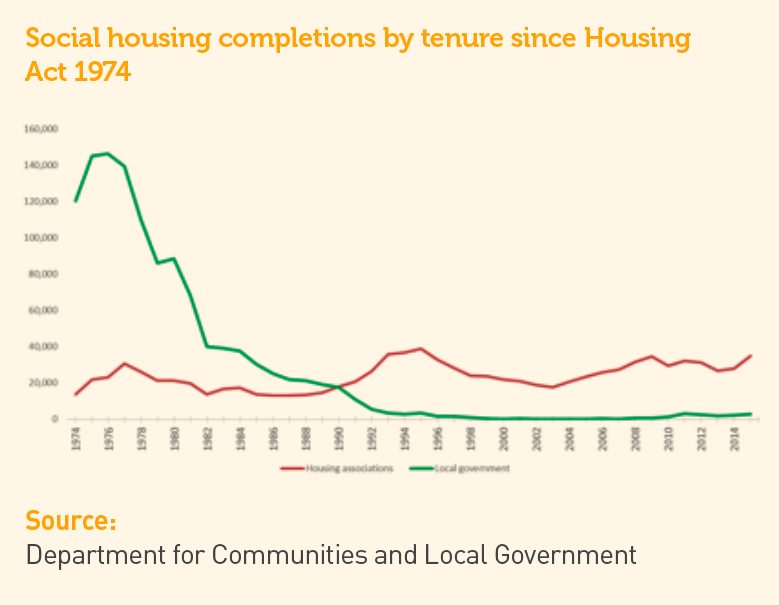
What is Right to Buy?
Right to Buy was a scheme under which longstanding local authority tenants were entitled to purchase their homes at a heavily discounted price. The policy was introduced by the Housing Act 1980 in England and Wales and the Housing Tenants Rights etc. [Scotland] Act 1980.
The legislation established a legal right for almost all tenants of three years’ standing and applied to almost all properties where the landlord was a council, new town, non-charitable housing association or other public sector body.
These were sold at a discounted market valuation taking account of years of tenancy in any relevant dwelling: starting at 33% (for three years), increased by 1% for each additional year up to a maximum of 50%.
History of Right to Buy
It was the Labour Party that had initially proposed the idea of the right of tenants to own the house they live in, as part of its manifesto for the 1959 General Election. Later, the Conservative-controlled Greater London Council of the late 1960s created a general sales scheme, which had reasonable interest from housing tenants during the 1970s.
As a result, the Conservative Party had committed itself to introducing Right to Buy before Margaret Thatcher became leader. It was largely in place in 1974, but did not prove an asset due to undesirable economic conditions. However, it was a key feature of Conservative Party literature in the run up to the 1979 General Election, with it being introduced as legislation in the 1980 shortly after Margaret Thatcher become Prime Minister.
Increase in home ownership
The Right to Buy policy proved popular with voters as aspiration to see home ownership increased. However, there was significant opposition from local many councils – particularly Labour controlled ones – as new homes were not being replaced. However, the legislation prevented councils from blocking purchases, so there was little that they could do except complain. In 1982, Right to Buy sales hit an all-time peak of over 240,000, and in 1984 the available discounts were increased. Realising how popular it was, the Labour Party abandoned its opposition to the policy in 1985. 1989 saw sales exceed 200,000 for the second time, and between 1979 and 1995, 2.1 million properties were transferred from the public sector under Right to Buy.
Stock transfer
Following the Housing Act 1980, which cemented the right to buy one’s council home, there was a significant decline in levels of public housing. This trend continued throughout the late 1980s with the Housing and Planning Act 1986, which gave councils the options of transferring all or part of their housing to another landlord, such as a registered social landlord, which included housing associations.
Right to Buy: A controversial yet popular policy
Despite the increase in sales because of the Right to Buy, from the outset there were restrictions on local authorities’ use of receipts from sales, which largely reverted to the Treasury. There was also no policy commitment to replace sold dwellings, which meant that many councils were unable to replace the stock they had lost.
The policy was considered expensive for councils, as they were forced to sell their housing stock at below the market rate. Large-scale stock transfer also diminished council housing accounts, hampering authorities’ ability to carry out repairs and improvements. As a result, many people who had purchased their home under Right to Buy were now faced with structural problems with some types of concrete houses, including the prefabricated concrete homes still in use. This made them unmortgageable and many people who had bought these sorts of houses found that they were effectively impossible to resell.

Improving standards in the social housing sector
One of the other impacts of the Grenfell Tower tragedy was a focus on standards in social housing and putting customers first. A Social Housing White Paper set out a roadmap for this, followed by the Social Housing Regulation Bill, published in June 2022.
When passed, the Bill will strengthen the role of the Regulator of Social Housing. This will include introducing Performance Improvement Plans for landlords that breach standards, allowing the Regulator to ‘name and shame’ landlords who breach standards, and to set a safety standard and enforce it with uncapped fines.
There is also a new look at professionalisation in the sector, to ensure that customers see better customer service from their landlords.